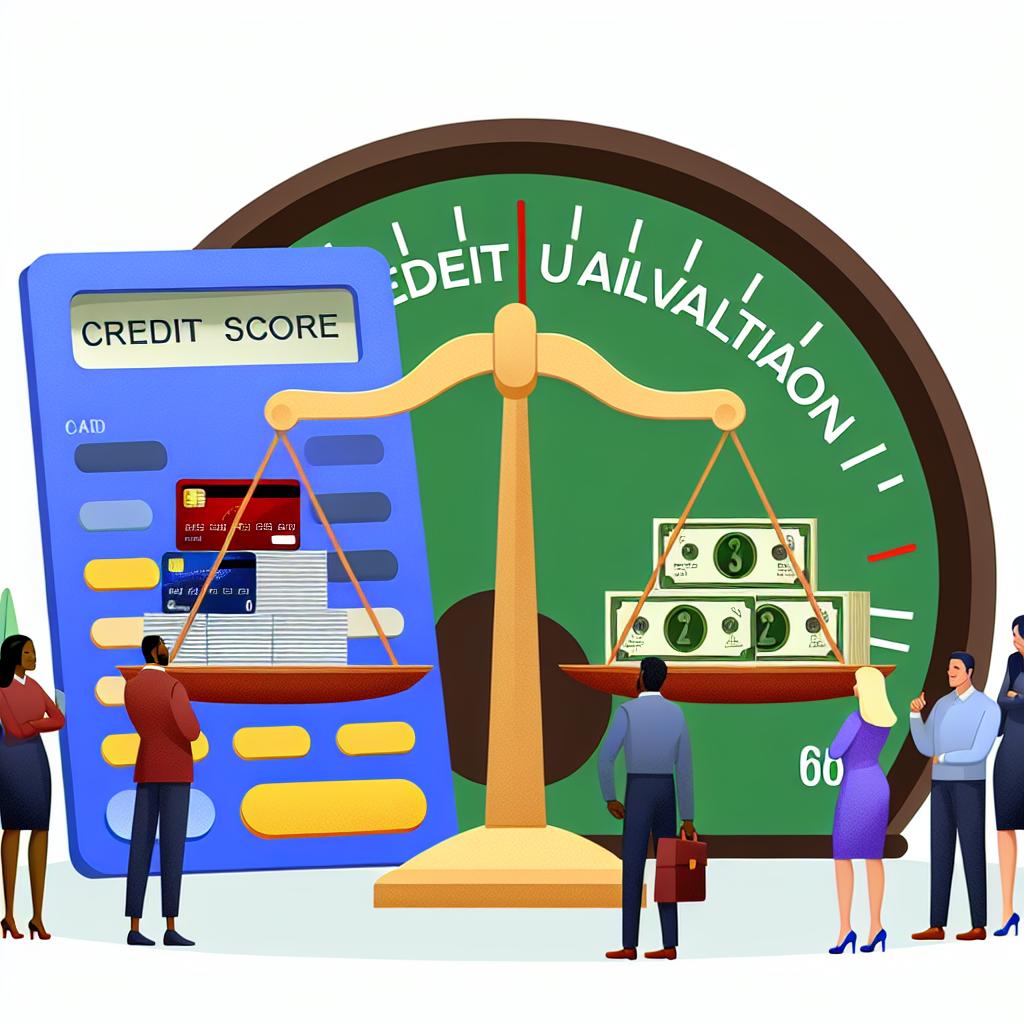The Importance of Credit Utilization Ratio in Credit Scoring
The credit utilization ratio is a fundamental component in the assessment of an individual’s creditworthiness, as determined by the major credit bureaus. Comprehending the implications of credit utilization on your credit score can significantly aid in better management of your financial health.
What is Credit Utilization Ratio?
The credit utilization ratio refers to the percentage of available credit that is currently being utilized. It is computed by dividing the total outstanding credit card balances by the aggregate credit limit across all credit cards. For instance, with an overall credit limit of $10,000 and a cumulative balance of $2,500 across all cards, the credit utilization ratio would stand at 25%.
This ratio offers a snapshot of your credit spending behavior and is an essential metric that lenders review to comprehend your borrowing habits.
How Does It Affect Your Credit Score?
The credit utilization ratio is a pivotal aspect of credit scoring, often constituting around 30% of an individual’s total credit score. A high credit utilization ratio might suggest excessive dependence on credit, signaling potential risk to lenders. In contrast, a low credit utilization ratio is typically viewed favorably, as it reflects prudent management of credit.
Impact on Different Credit Scoring Models
Various credit scoring models, including FICO and VantageScore, integrate the credit utilization ratio into their calculations. Although the optimal ratio might differ, financial experts generally advise maintaining it below 30% to support a healthy credit score. Some lenders might even prefer to see utilization ratios lower than this benchmark, especially when evaluating applications for significant lines of credit.
Strategies to Manage Your Credit Utilization Ratio
Proper management of the credit utilization ratio is essential to achieving and maintaining a good credit score. Here are some strategies you might consider:
Pay Down Balances: Consistently reducing your credit card balances can positively impact your credit utilization ratio. By maintaining low balances, you exhibit effective credit management.
Increase Credit Limits: If possible, request an increase in your credit limit from your credit card issuers. An elevated credit limit can lower your utilization ratio, provided your spending does not increase commensurately.
Spread Out Purchases: Managing your spending across multiple cards rather than concentrating expenditures on a single card can help keep individual card utilization rates low, thereby optimizing your overall ratio.
Monitor Your Credit Report: Regularly reviewing your credit report is vital in identifying any inaccuracies that might affect your credit utilization. Consider using credit monitoring tools to stay informed about changes to your credit profile.
The Broader Implications of Credit Utilization
Beyond influencing your credit score, maintaining effective control over your credit utilization can have broader financial implications. A low credit utilization ratio enhances your likelihood of securing loan approvals and could also afford you more favorable interest rates. Furthermore, it underscores your ability to manage credit responsibly, positively impacting your overall credit profile and financial reputation.
Managing your credit utilization is a meaningful step toward optimizing your financial opportunities. For more detailed insights and personalized advice, consulting financial advisors or engaging with resources from major credit bureaus, such as Experian or TransUnion, may be beneficial.
Additional Considerations and Tips
While the strategies listed above are fundamental, individual circumstances may warrant varied approaches. For homeowners or those with significant assets, it might be worthwhile to explore secured lines of credit, which can sometimes offer lower interest rates and different utilization impacts.
Understanding Credit Limits and Spending
It is also crucial to understand the terms and conditions associated with your credit cards regarding interest rates and credit limits. Engaging with banks to receive updates on potential changes that might affect your available credit can help preemptively manage your utilization ratio.
Automate Payments and Set Alerts
To ensure that balances are consistently paid down, consider automating payments or setting up alerts to notify you when balances reach a pre-determined threshold. Automatic payments can ensure that you never miss a due date, potentially saving you from hidden penalties or interest rate hikes resulting from missed payments.
Long-term Impact of Credit Utilization Management
The benefits of maintaining a low credit utilization ratio transcend immediate financial advantages. Over the long term, responsible management can lead to an improved credit history, enabling not just better loan conditions but also increased negotiation power with creditors and service providers.
Additionally, those who consistently demonstrate financial responsibility through effective credit utilization practices may gain access to premium credit products, including cards with lucrative rewards programs and attractive insurance options.
Impact on Financial Wellness
An improved credit score, backed by judicious credit utilization management, is a cornerstone of financial wellness. It brings not only increased borrowing power but also peace of mind and improved financial security. Understanding and strategically managing credit utilization is, therefore, not just a task for managing debt but a strategic approach towards comprehensive financial health.
In summary, understanding the complexities of the credit utilization ratio and its significant role in credit scoring is vital for maintaining financial stability. Proactive management of this ratio can amplify your financial health and broaden your access to favorable lending terms, ensuring a robust credit profile for years to come.
